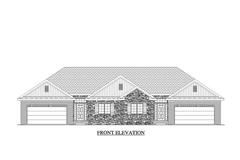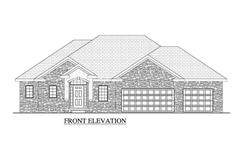Transition Zone: How to Create a Mudroom
Transition Zone: How to Create a Mudroom
Mudrooms with lockers are another popular request by our customers. If you're dreaming of a new house with this great space, here's some planning tips to create a well-organized area from Houzz.com.
Transition Zone: How to Create a Mudroom
If you live, or have ever lived, in a house where there’s an immediate transition from the main entrance into the living area, you’ll know how this can make it hard to keep your house clean and organised. You often end up with a big fat mess congregating unceremoniously around the entrance – shoes, hats, coats; whatever anyone casts aside as they walk through the door – as well as mud and dirt spread through the home.
In Europe and the US, some people have ‘mudrooms’ – quite literally an area to keep mud out of the house. These are usually found in rural areas, but even in suburban areas there is often a porch or vestibule that can perform that function. ‘Mudrooms’ are not as commonplace in Australia though, but we certainly still have mud – it’s raining ferociously as I write this. We also have sand, dirt, pets, sports – all the things that make it useful to create a dedicated transition zone between outside and in.
What is a ‘mudroom’ anyway?
According to one dictionary definition, a mudroom is “a small room or entryway in a house where wet or muddy footwear and clothing can be removed.”
Mudrooms are traditional in country homes where it is necessary to clean up after coming in from fields covered in mud. They can be a secondary entrance, or a back entrance. Some might have a sink, a spare toilet or even a shower to clean yourself up. When I talk about a mudroom, I really mean any place between outdoors and in where you can take off your shoes, bags, hats and scarves, and deposit mud and dirt, keeping mess from the main part of the house. In Australian coastal areas, we might call it a ‘sand room’; in rural areas a ‘dirt room’. It’s also quite like a cloak room. But call it what you want, you won’t look back from making one…
What do you want it for?
Think of everything you might put in this room or space – every last thing – before you plan it. Consider how you and your family live, including kids and animals. They might all want to leave their stuff there. These are some of the things you might want to store in this space:
- Coats
- Hats
- Shoes
- Scarves
- Handbags, backpacks, shopping bags
- Keys
- Mail (including a bin to recycle junk immediately)
- Prams, buggies, baby carriers
- Dog bowls, leads, etc.
- Sporting equipment, soccer boots, rackets, balls, yoga mats, etc.
FIND SPACE FOR A MUDROOM
Adapt your entry
If you’re not lucky enough to have a dedicated entryway, could you look closely at your home and see if there’s a space that could be turned into a functional area to organize that transition between outside and in? It’s really all about practicality but if it’s the immediate entrance into your home, you may want to plan for pretty elements as well as practical ones. Make it bright and appealing, but also think of ways to help your family keep it organised. You could even have a color-coded basket for each member of the family if you think that might make them more tidy or more inclined to put their things away.
Combine with the laundry
If there’s simply no room for an additional space, try to create a mudroom from an existing part of the house. One way is to fit out a hallway, even it’s a narrow space. Here a hallway is both a long laundry area and a mudroom, with lots of seamless storage in uniform cabinetry for a clean and functional area, and lots of space to put things. If you have a laundry space already that has direct access to the outdoors, you can convert this to a multipurpose space that can also act as this transition zone. Even if you want to keep your front entrance for visitors, you can tell family members, especially dirty ones, that they have to use the back door. Combining a laundry and mudroom is a logical and effective use of space. It’s ideal for disrobing out of muddy sports clothes or outdoor gear and putting it straight into the dirty washing.
Keep it outside
If there’s absolutely no space to create this transition area inside the home, is there an area on the outside you could use? If you’re lucky enough to have a verandah, cordon off an area for everything from soccer boots to surf boards.
Purpose build
If you don’t have an existing space that can be converted, could you consider adding on a specially-designated vestibule to use as a transition area? If renovating or building from scratch, think about this in your floorplan.
PRACTICAL CONSIDERATIONS
1. Storage
If you do have the space, or a dedicated area for the mudroom, build in as much storage as is practically possible. Having lots of space here for shoes and coats will take pressure off other storage areas in the house, too.
Once you’ve determined who is using the mudroom and what you’ll need it for, plan for all the various shelves, hardware and storage items you’ll need. You’ll need hooks for hanging, perhaps drawers for storage or open spaces and baskets for easy access. If you’re intending to store keys and mail, consider some small pigeon-holes such as the shelves in this mudroom. These can store those things you need to find in an instant as you walk out the door, such as keys and wallets. Use storage baskets to help you organise the various elements of the mudroom. A well-organized mudroom could have open shelving for shoes under the bench, with baskets in higher shelves for items you access less frequently. Even if it’s only the smallest of spaces, see if you can add elements that will help you to organise this area. Think about any items you might need as you rush out the door. For a beach house, or anyone with a pool, a handy basket filled with fresh towels at the door would be a welcome and colourful addition.
2. Seating
We’re often seeing bench space in mudrooms with pretty upholstered cushions, encouraging people to take off their shoes before they tread their muddy boots all over the house. This light-coloured upholstery would get very dirty in my house, so decorate yours according to your needs and how your family live. If you have an inviting entrance area but not the space for masses of built-in storage, use freestanding elements, such as a lovely console, bench, hat or umbrella stand, as well as attractive baskets to deposit shoes and keep them out of the way.
3. Flooring
Think about what will be on the floor of this area. This might be a good way to zone this space out from the rest of the house. Opt for sturdy and easy-to-clean surfaces. Add a rug for color and a welcoming touch. It’s easy to frequently shake out the dust and dirt outside.
TAILOR YOUR MUDROOM TO YOUR NEEDS
- Add a mirror: As well as being able to check yourself as you leave the house in a rush, ensuring your sweater isn’t on back-to-front, a mirror is a great way to create the feeling of extra space in a small area.
- Add a desk: Imagine filing your mail as soon as you receive it – junking the junk mail immediately, and emptying your purse as you come home, filing the important receipts, and binning the rest. All this will save you lots of time later on. Your desk could even come complete with a pinboard, ideal for reminder notices, kids’ school stuff and urgent bills – things that have a tendency to gather, annoyingly, on the kitchen benchtop.
- Add a shower: In this Sydney weatherboard home, a space has been created at the rear of the home where you can even shower off as soon as you come through the door.
- Add some color: It might be the first thing you see as you walk through the door, so consider painting it a bright, happy color. And add a beautiful, potted plant.























